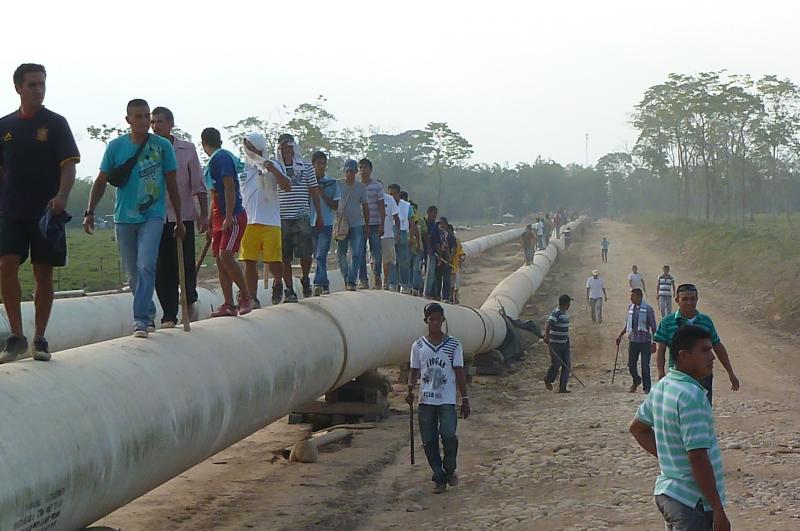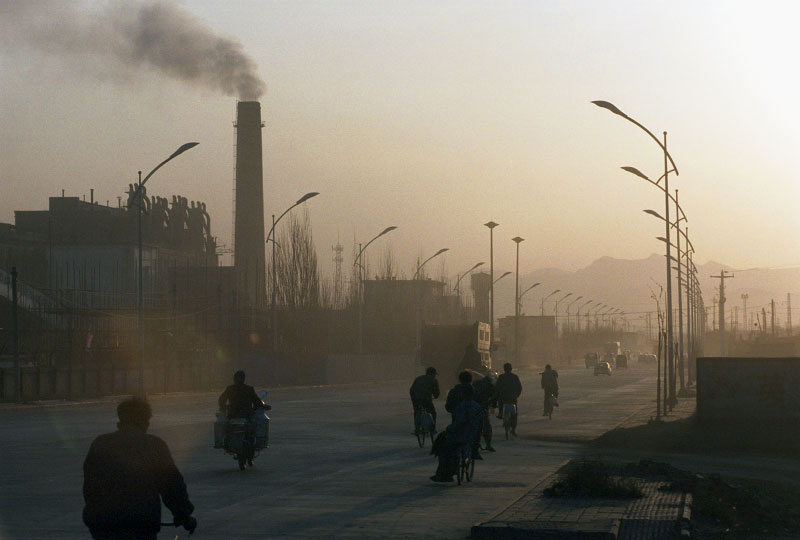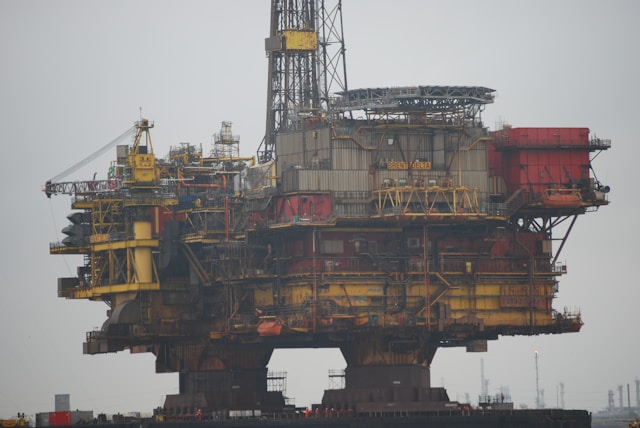by Deep Green Resistance News Service | Mar 17, 2013 | Colonialism & Conquest, Indigenous Autonomy, Lobbying, Mining & Drilling
By Survival International
Amazon Indians from Peru and Brazil have joined together to stop a Canadian oil company destroying their land and threatening the lives of uncontacted tribes.
Hundreds of Matsés Indians gathered on the border of Peru and Brazil last Saturday and called on their governments to stop the exploration, warning that the work will devastate their forest home.
The oil giant Pacific Rubiales is headquartered in Canada and has already started oil exploration in ‘Block 135’ in Peru, which lies directly over an area proposed as an uncontacted tribes reserve.
In a rare interview with Survival, a Matsés woman said, ‘Oil will destroy the place where our rivers are born. What will happen to the fish? What will the animals drink?’
The Matsés number around 2,200 and live along the Peru-Brazil border. Together with the closely-related Matis tribe, they were known as the ‘Jaguar people’ for their facial decorations and tattoos, which resembled the jaguar’s whiskers and teeth.
The Matsés were first contacted in the 1960s, and have since suffered from diseases introduced by outsiders. Uncontacted tribes are also at extreme risk from contact with outsiders through the introduction of diseases to which they have little or no immunity.
Despite promising to protect the rights of its indigenous citizens, the Peruvian government has allowed the $36 million project to go ahead. Contractors will cut hundreds of miles of seismic testing lines through the forest home of the uncontacted tribes, and drill exploratory wells.
The government has also granted a license for oil explorations to go ahead in ‘Block 137’, just north of ‘Block 135’, which lies directly on Matsés land. Despite massive pressure from the company, the tribe is firmly resisting the oil company’s activities in their forest.
The effects of oil work are also likely to be felt across the border in Brazil’s Javari Valley, home to several other uncontacted tribes, as seismic testing and the construction of wells threaten to pollute the headwaters of several rivers on which the tribes depend.
Survival’s Director Stephen Corry said, ‘The Canadian state was founded on the theft of tribal land. When Europeans invaded Canada, they introduced alien diseases, seized control of natural resources, and brought about the extinction of entire peoples. It’s a great irony that a Canadian company today is poised to commit the same crimes against tribes in Peru. Why doesn’t the Peruvian government uphold its own commitments to tribal rights? History tells us that when uncontacted peoples’ land is invaded, death, disease and destruction follow.’
From Survival International: http://www.survivalinternational.org/news/9023

by Deep Green Resistance News Service | Feb 25, 2013 | Indigenous Autonomy, Noncooperation, Protests & Symbolic Acts, Repression at Home
By Colombia Informa; translation by Molly Fohn
After two weeks of peaceful protesting against oil exploitation in Arauca, on February 12 that department’s social organizations began a strike announced a few days earlier as a response to the repeated broken promises by the national government and transnational companies.
The last attempt at dialogue took place on Monday, February 11, between the Commission’s spokespeople (composed of a delegation of indigenous people, peasants, youth, women, workers and community members) and representatives of the Minister of the Interior, as well as oil companies that operate in the region, with the goal of establishing the conditions that would allow the fulfillment of those promises that they’ve been making since May 2012.
The repeated lack of follow-through by the government and businesses, and the delay in the negotiation process caused the fracture in the space for dialogue, followed by the use of state force: approximately 1,200 members of the Mobile Anti-Disturbance Squadron (the ESMAD in Spanish) arrived to violently evict the communities at the protest sites.
The first act occurred on the walkway San Isidro, over the de Tame road toward the Arauca capital, at the gate to the petroleum complex Caricare, which is used by the transnational company OXY, where ESMAD, the Police, and the Army assaulted the mobilized communities by setting fires to the surrounding pastures, discharging their weapons, destroying common buildings (a school), taking away the food supplies to the protestors, and beating and retaining four people.
As a result of the violence, a pregnant indigenous woman who was passing through lost her baby because of the effects of the tear gas, and had to receive emergency attention at a medical center.
The police had kept local and national reporters from contacting CM&, RCN, and other local media that moved to Caricare; the national army set up a checkpoint in the sector of Lipa that prohibited the passage of reporters “for security reasons.” It should be noted that in the Quimbo (Huila) events the police also restricted the presence of the media and acted out a series of violations of basic human rights and International Humanitarian Rights (DIH).
In the face of the this situation, the Human Rights Foundation Joel Sierra posted an Urgent Action which stated its concern for the detention of people, aggression and brutal violence exercised against the peasants and indigenous peoples, the infractions of the International Humanitarian Rights committed by the police to violate and destroy civil installations, and the removal of supplies for feeding those protesting. The Foundation also insisted that the Colombian State respect human rights and the International Humanitarian Rights norms.
In similar form, Urgent Action denounced a series of violations to the protestors’ rights by the police, whose members have dedicated themselves to constantly photograph those that participate in the protests, have retained, interrogated, and reported some of them, and have appeared in civilian clothing and armed in the middle of the night at the edges of the protest sites, among other cases.
In the rest of the protest sites, like the gate to the petroleum complex of Caño Limón in the municipality of Arauca, the town of Caricare in Arauquita, the bicentennial pipeline in Tamacay and el Tigre (Tame) and in Villamaga (Saravena) and the fire substation of Banadías (Saravena), the authorities have sent contingents from the army, the national police, and the ESMAD, because they fear the same will happen in those places that happened in Caricare.
It’s important to note that at this time people and vehicles cannot travel by land to get outside of the department of Arauca by the only two major roads (Casanare and Norte de Santander), and all commerce and activity is completely paralyzed in that region of the country.
From Upside Down World: http://upsidedownworld.org/main/news-briefs-archives-68/4140-colombia-riot-police-attack-communities-protesting-oil-exploitation-in-arauca-
by Deep Green Resistance News Service | Jan 17, 2013 | Colonialism & Conquest, Defensive Violence, Indigenous Autonomy
By Jonathan Watts / The Guardian
An indigenous community in the Ecuadorian Amazon has won a reprieve after building up an arsenal of spears, blowpipes, machetes and guns to fend off an expected intrusion by the army and a state-run oil company.
The residents of Sani Isla expressed relief that a confrontation with Petroamazonas did not take place on Tuesday as anticipated, but said the firm is still trying to secure exploration rights in their area of pristine rainforest.
“We have won a victory in our community. We’re united,” said the community president, Leonardo Tapuy. “But the government and the oil company won’t leave us alone. ”
The Kichwa tribe on Sani Isla, had said they were ready to fight to the death to protect their territory, which covers 70,000 hectares. More than a quarter of their land is in Yasuni national park, the most biodiverse place on earth.
Petroamazonas had earlier told them it would begin prospecting on their land on 15 January, backed by public security forces.
Before the expected confrontation,the shaman, Patricio Jipa said people were making blowpipes and spears, trying to borrow guns and preparing to use sticks, stones, and any other weapons they could lay their hands on.
“Our intention was not to hurt or kill anyone, but to stop them from entering our land,” he said.
It is unclear why Petroamazonas hesitated. The company has yet to respond to the Guardian’s request for a comment.
Locals speculated that it was due to a reaffirmation of opposition to the oil company at a marathon community meeting on Sunday.
“They’ve heard that we are united against the exploration so they have backed off,” said Fredy Gualinga, manager of the Sani Lodge. “We’re happy they haven’t come. Life is going on as normal.”
The relief may not last for long given the huge fossil fuel resources that are thought to lie below the forest.
“It was a close thing, but we’re not out of the water. The oil company has not given up. They will continue to hound us and to try to divide the community. But at least we have a few days respite,” said Mari Muench, a British woman who is married to the village shaman.
The elected leaders of Sani Isla have pledged to resist offers from Petroamazonas for the duration of their term.
“This policy will remain in place during our period in office. We’re committed to that and we will do what we can to make it more permanent,” said Abdon Grefa, the speaker of the community.
The battle has now moved to the judicial system and the court of public opinion. Their appeal for an injunction went before a judge on Wednesday and they are calling on supporters to help them build a long-term economic alternative to fossil fuels.
“We hope people will write protest letters to Petroamazonas, come and visit our lodge, promote Sani, donate money to our school and projects, volunteer as teachers or provide funds to students to travel overseas so they can learn what we need to survive in the future,” said the community secretary, Klider Gualinga.
From The Guardian: http://www.guardian.co.uk/environment/2013/jan/17/indigenous-ecuadorian-tribe-oil-intrusion

by Deep Green Resistance News Service | Dec 18, 2012 | Climate Change
By Fiona Harvey / The Guardian
Coal is likely to rival oil as the world’s biggest source of energy in the next five years, with potentially disastrous consequences for the climate, according to the world’s leading authority on energy economics.
One of the biggest factors behind the rise in coal use has been the massive increase in the use of shale gas in the US.
Coal consumption is increasing all over the world – even in countries and regions with carbon-cutting targets – except the US, where shale gas has displaced coal, shows new research from the International Energy Agency (IEA). The decline of the fuel in the US has helped to cut prices for coal globally, which has made it more attractive, even in Europe where coal use was supposed to be discouraged by the emissions trading scheme.
Maria van der Hoeven, executive director of the IEA, said: “Coal’s share of the global energy mix continues to grow each year, and if no changes are made to current policies, coal will catch oil within a decade.”
Coal is abundant and found in most regions of the world, unlike conventional oil and gas, and can be cheaply extracted. As a result, coal was used to meet nearly half of the rise in demand for energy globally in the past decade. According to the IEA, demand from China and India will drive world coal use in the coming five years, with India on course to overtake the US as the world’s second biggest consumer. China is the biggest coal importer, and Indonesia the biggest exporter, having temporarily overtaken Australia.
According to the IEA’s Medium Term Coal Market Report, published on Tuesday morning, the world will burn 1.2bn more tonnes of coal per year by 2017 compared with today – the equivalent of the current coal consumption of Russia and the US combined. Global coal consumption is forecast to reach 4.3bn tonnes of oil equivalent by 2017, while oil consumption is forecast to reach 4.4bn tonnes by the same date.
With the highest carbon emissions of any major fossil fuel, coal is a huge contributor to climate change, particularly when burned in old-fashioned, inefficient power stations. When these are not equipped with special “scrubbing” equipment to remove chemicals, coal can also produce sulphur emissions – the leading cause of acid rain – and other pollutants such as mercury and soot particles.
From The Guardian: http://www.guardian.co.uk/environment/2012/dec/18/coal-challenge-oil-international-energy-agency

by Deep Green Resistance News Service | Nov 30, 2012 | NEWS, Toxification
By Georgia Institute of Technology
If the 4.9 million barrels of oil that spilled into the Gulf of Mexico during the 2010 Deep Water Horizon spill was a ecological disaster, the two million gallons of dispersant used to clean it up apparently made it even worse – 52-times more toxic. That’s according to new research from the Georgia Institute of Technology and Universidad Autonoma de Aguascalientes (UAA), Mexico.
The study found that mixing the dispersant with oil increased toxicity of the mixture up to 52-fold over the oil alone. In toxicity tests in the lab, the mixture’s effects increased mortality of rotifers, a microscopic grazing animal at the base of the Gulf’s food web. The findings are published online by the journal Environmental Pollution and will appear in the February 2013 print edition.
Using oil from the Deep Water Horizon spill and Corexit, the dispersant required by the Environmental Protection Agency for clean up, the researchers tested toxicity of oil, dispersant and mixtures on five strains of rotifers. Rotifers have long been used by ecotoxicologists to assess toxicity in marine waters because of their fast response time, ease of use in tests and sensitivity to toxicants. In addition to causing mortality in adult rotifers, as little as 2.6 percent of the oil-dispersant mixture inhibited rotifer egg hatching by 50 percent. Inhibition of rotifer egg hatching from the sediments is important because these eggs hatch into rotifers each spring, reproduce in the water column, and provide food for baby fish, shrimp and crabs in estuaries.
“Dispersants are preapproved to help clean up oil spills and are widely used during disasters,” said UAA’s Roberto-Rico Martinez, who led the study. “But we have a poor understanding of their toxicity. Our study indicates the increase in toxicity may have been greatly underestimated following the Macondo well explosion.”
Martinez performed the research while he was a Fulbright Fellow at Georgia Tech in the lab of School of Biology Professor Terry Snell. They hope that the study will encourage more scientists to investigate how oil and dispersants impact marine food webs and lead to improved management of future oil spills.
“What remains to be determined is whether the benefits of dispersing the oil by using Corexit are outweighed by the substantial increase in toxicity of the mixture,” said Snell, chair of the School of Biology. “Perhaps we should allow the oil to naturally disperse. It might take longer, but it would have less toxic impact on marine ecosystems.”
From Georgia Institute of Technology
Photo by Kevin Harris on Unsplash



